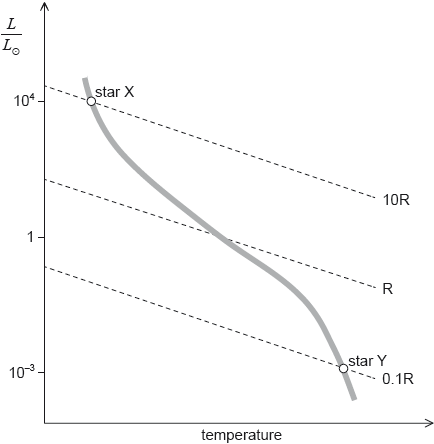| Date | November 2018 | Marks available | 2 | Reference code | 18N.3.SL.TZ0.12 |
| Level | Standard level | Paper | Paper 3 | Time zone | 0 - no time zone |
| Command term | Draw | Question number | 12 | Adapted from | N/A |
Question
The surface temperature of the star Epsilon Indi is 4600 K.
Determine the peak wavelength of the radiation emitted by Epsilon Indi.
Using the axis, draw the variation with wavelength of the intensity of the radiation emitted by Epsilon Indi.
The following data are available for the Sun.
Surface temperature = 5800 K
Luminosity =
Mass =
Radius =
Epsilon Indi has a radius of 0.73 . Show that the luminosity of Epsilon Indi is 0.2 .
Epsilon Indi is a main sequence star. Show that the mass of Epsilon Indi is 0.64 .
Describe how the chemical composition of a star may be determined.
Describe the stages in the evolution of Epsilon Indi from the point when it leaves the main sequence until its final stable state.
Markscheme
λ = « =» 630 «nm» ✔
black body curve shape ✔
peaked at a value from range 600 to 660 nm ✔
✔
L = 0.211 ✔
M = « =» 0.640 ✔
Obtain «line» spectrum of star ✔
Compare to «laboratory» spectra of elements ✔
red giant ✔
planetary nebula ✔
white dwarf ✔


